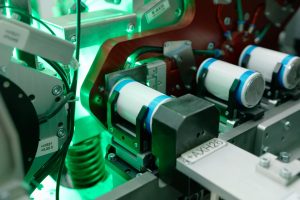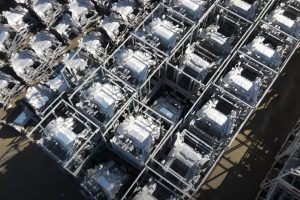- 🚀 The Tesla Megapack project in Western Australia started operations earlier than expected, taking under 18 months from construction to activation as the state’s largest battery project.
- 🛡️ The Collie Battery Stage 1 is now operational, boasting 219 MW/877 MWh of capacity, providing grid stability in collaboration with the Australian Energy Market Operator.
- ⚡ The battery stores energy during the day and discharges during peak evening hours, addressing risks from retiring coal plants and increasing solar installations.
- 🌍 It’s Neoen’s first large-scale and 4-hour battery project in Western Australia, contributing to the state’s energy transition efforts.
- 🔧 Construction of Collie Battery Stage 2 is underway, aiming for a total project capacity of 560 MW/2,240 MWh by the end of next year.
- 🏭 Tesla produces Megapack batteries in California and is building a similar capacity factory in Shanghai to enhance production.
The energy landscape of Western Australia is undergoing a significant transformation, fueled by the enduring vision of a sustainable and stable power grid. At the heart of this evolution is the Tesla Megapack project, a beacon of innovation that has set ambitious milestones in record time. The project exemplifies how renewable energy solutions are not just futuristic ideals but functional and impactful components of modern infrastructure.
Harnessing the Power of Megapacks
The Tesla Megapack project commenced operations earlier than anticipated, achieving activation in less than 18 months. This rapid deployment is a testament to strategic planning and the robustness of new-age energy solutions. The Collie Battery Stage 1, a milestone within this project, is now live with a remarkable capacity of 219 MW/877 MWh. This installation not only champions progress but also signifies Western Australia’s commitment to revolutionizing its energy dynamics through strategic partnerships and advanced technologies.
The Strategic Role of Collie Battery
The Collie Battery’s primary function extends beyond energy storage. It plays a critical role in providing grid stability, operating under collaboration with the Australian Energy Market Operator. This project is a strategic response to the imminent challenges posed by the transition from traditional coal plants to more sustainable energy sources, particularly as residential and commercial solar installations surge.
The operational mechanism of this megaproject involves storing excess solar energy during daylight hours, thus optimizing the utilization of renewable resources. The stored energy is then harnessed during peak evening hours, ensuring a balanced and reliable power supply. This capability is pivotal in mitigating the risks associated with decommissioning coal plants, thereby averting potential power shortfalls.
Neoen’s Groundbreaking Initiative
This project marks Neoen’s first venture into large-scale and 4-hour battery projects in Western Australia. As the primary developer, Neoen has firmly anchored itself as a leader in the state’s transition toward renewable energy. This undertaking is not an isolated effort; it is part of a broader strategy to facilitate a cleaner, more sustainable energy future for Western Australia.
The Path Forward: Stage 2 and Beyond
The momentum of this transformative project continues with the construction of Stage 2. Set to augment capacity significantly, Stage 2 aims to bring the total project capacity to 560 MW/2,240 MWh by the end of next year. This expansion not only enhances energy storage capacity but also strengthens the grid’s resilience against future demands.
Tesla’s Global Energy Ambitions
The production of Tesla Megapacks originates from their Megafactory in California, yet Tesla’s vision transcends regional boundaries. The construction of an analogous facility in Shanghai underscores Tesla’s commitment to elevating global production capabilities to meet ever-increasing demand.
Future Implications and Global Perspectives
- Enhancing Grid Reliability
- Stability: Tesla Megapacks provide a buffer against sudden drops or spikes in energy supply.
- Efficiency: They’re designed to optimize energy flows and support seamless integration with existing infrastructure.
- Catalyzing Energy Transition
- Innovation: Large-scale storage empowers new patterns of energy consumption and generation.
- Sustainability: These projects support a gradual transition away from fossil fuels.
- Economic and Environmental Impact
- Job Creation: Developing and maintaining these systems stimulates local economies.
- Carbon Footprint: A reduced reliance on coal-powered energy significantly decreases emissions.
Conclusion: A Blueprint for Modern Energy Transformation
The Tesla Megapack project in Western Australia epitomizes the future of energy—a blend of innovation, sustainability, and strategic foresight. It not only sets a precedent for future projects but also lays down a definitive path for other regions to follow in their journey towards energy resilience and ecological responsibility.





